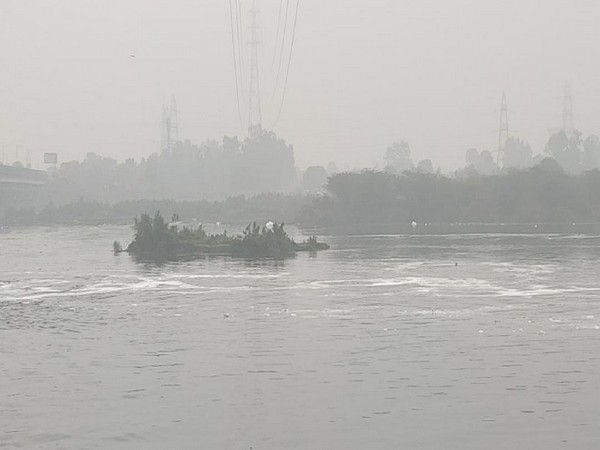Yamuna's pollution doubled in 8 years of Kejriwal govt: LG office sources
Pollution in the Yamuna river in Delhi has doubled in the last eight years of the Arvind Kejriwal government, sources in the lieutenant governors office said on Monday citing data from the Delhi Pollution Control Committee DPCC.The Delhi Jal Board DJB said it is already working to resolve legacy problems and the upgradation of almost all the major sewage treatment plants STPs is expected to be completed by the end of December.

- Country:
- India
Pollution in the Yamuna river in Delhi has doubled in the last eight years of the Arvind Kejriwal government, sources in the lieutenant governor's office said on Monday citing data from the Delhi Pollution Control Committee (DPCC).
The Delhi Jal Board (DJB) said it is already working to resolve legacy problems and the upgradation of almost all the major sewage treatment plants (STPs) is expected to be completed by the end of December. The DPCC and the DJB gave a presentation to Lieutenant Governor V K Saxena on pollution in the river on Saturday.
The LG had called a meeting to take stock of the ground situation before the first meeting of a high-level committee set up by the National Green Tribunal on January 9 for the cleaning of the Yamuna. The green tribunal had requested the Delhi LG to head the committee.
Wastewater from unauthorised colonies and jhuggi-jhopri clusters, and poor quality of treated wastewater discharged from STPs and common effluent treatment plants are the main reasons behind high levels of pollution in the river.
The DPCC data showed that Biological Oxygen Demand (BOD) levels remained within permissible limits (2 milligram per litre) at Palla , where the river enters Delhi, since 2014.
BOD, an important parameter for assessing water quality, is the amount of oxygen required by aerobic microorganisms to decompose organic material present in a water body. BOD level less than 3 milligram per litre (mg/l) is considered good.
At the Okhla Barrage, where the river leaves Delhi and enters Uttar Pradesh, the BOD levels rose from 32 mg/l in 2014 to a staggering 56 mg/l in 2023, an official source said, citing the DPCC data.
The DPCC collects river water samples at Palla, Wazirabad, ISBT bridge, ITO bridge, Nizamuddin bridge, Okhla Barrage, Agra Canal at Okhla Barrage and Asgarpur every month.
The pollution load in the river has doubled in the last eight years of the Kejriwal government, the source said.
''The year-on-year rise in pollution has been consistent since 2014 with the only exception being 2019, when Haryana released more water into the Yamuna from the Hathnikund Barrage while undertaking the repair of the Yamuna Canal. The same resulted in pollutants getting washed downstream.
''This deadly increase in pollution is mainly on the account of the AAP government absolutely failing to check pollution from the Najafgarh Drain despite persistent directions and monitoring of the Supreme Court and the National Green Tribunal,'' the source said.
The BOD levels at ISBT, just after the Najafgarh Drain falls into the Yamuna, rose from 26 mg/l in 2014 to 52 mg/l in 2017 and ''remains at a high of 38 mg/l even today''.
The Najafgarh Drain accounts for 68.71 per cent of the wastewater being discharged into the Yamuna. The Shahdara Drain -- the second biggest polluter --accounts for 10.90 per cent of the wastewater discharge.
The cleaning of the two drains has ''remained criminally unaddressed''. The drains flowing into the Najafgarh Drain have not been trapped and the untreated sewage is being discharged into the drain and then into the Yamuna, the sources said.
They said that just nine of the 35 STPs in Delhi comply with the DPCC standards.
According to DPCC norms, BOD and TSS (total soluble solids) in treated wastewater should be less than 10 mg/l.
Delhi generates around 768 million gallons a day (MGD) of sewage which is treated at these 35 STPs having a cumulative treatment capacity of 530 MGD.
However, these STPs function at just 69 per cent of their installed capacity and hence, effectively, only 365 MGD of sewage is treated everyday.
The DJB is already working to resolve these legacy problems and has awarded work for the upgradation of almost all the major STPs. It is expected to be completed by the end of December 2023, the utility's vice chairman Saurabh Bharadwaj said.
''Wherever deficiencies have been found, we have issued show cause notices to private operators running the STPs and executive engineers in case of the DJB-operated plants,'' he said.
Bharadwaj also claimed that the projects are ''facing difficulty because all payments were stopped for six months due to the obstacles created by the finance department''. ''This might further delay the work. We expect and request the LG to take action against the erring officers of the finance department,'' he said.
(This story has not been edited by Devdiscourse staff and is auto-generated from a syndicated feed.)
ALSO READ
Congress appoints presidents of District, City Committees in Uttar Pradesh
Uttar Pradesh: One dead as two groups clash in Agra
Uttar Pradesh: Ashfaq Ullah Kha Zoological Park's lioness Mariam passes away
Uttar Pradesh: CM Yogi exudes confidence in NDA's victory in bipolar contest during LS polls
Seven women among 80 candidates in first phase of LS polls in Uttar Pradesh










